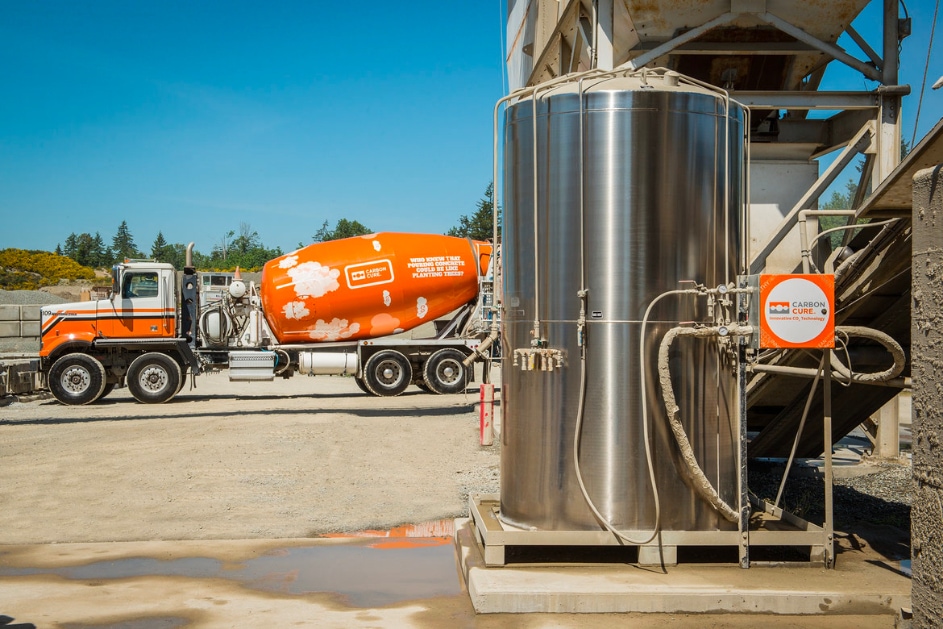CarbonCure Technologies just closed a round of funding for an undisclosed amount of money. Notable investors include Amazon’s Climate Pledge Fund and Breakthrough Energy Ventures (with others in the syndicate). CarbonCure recycles waste carbon dioxide to make stronger and greener concrete.
Why does this matter?
- Traditional methods of manufacturing concrete involve heating limestone (calcium carbonate) at a temperature of 2700°F, resulting in the direct release of carbon dioxide to the atmosphere. Largely due to this chemical reaction, cement manufacturing is the most carbon-intensive process in the concrete production life cycle.
- Cement is responsible for 7% of global carbon dioxide emissions. Cement is primarily used to create concrete for construction. By injecting carbon dioxide into concrete, CarbonCure produces stronger concrete and reduces carbon emissions.
- CarbonCure uses carbon dioxide sourced by industrial emitters to reduce the carbon impact of concrete by 4-6%.
What’s next?
- CarbonCure’s goal is to prevent 500 megatonnes of emissions from entering the atmosphere every year by 2030.
- As carbon offsets are becoming more popular, other industrial companies will change their practices and operations.
- In 2020, big tech companies have pledged to become carbon neutral by 2040. Achieving carbon neutrality is no simple task and requires a variety of solutions, including carbon offsets and more environmentally friendly construction materials.
- CarbonCure’s technology will incentivize carbon emitters to be more environmentally conscious and capture their carbon emissions to create value.
- Investment in the carbon offset market and technology will spur innovation in sustainable construction materials, carbon capture technology, and carbon products.
Thoughts
Carbon offset purchases are only one way for companies to go carbon neutral. It is just as important, if not more important, for companies to adopt greener and more sustainable practices/operations. Purchasing carbon offsets is the easier of the two options to become carbon neutral, but it is not enough. Carbon offsets should primarily be used for small and medium sized businesses that can’t afford to change their practices, meanwhile large companies should take responsibility for their footprint.
About The Author

Daniel currently works at Lawrence Livermore National Laboratory. His original assignment was to maintain and update facility safety documentation for all facilities on-site, and perform risk analysis. Over time, his role has expanded to leading continuous improvement efforts through product management.
Concurrently, Daniel volunteers with Techstars, helping organize startup weekends, and with the American Institute of Chemical Engineers, organizing events on the local and national levels of the organization. He also volunteers with One World, and previously with Powerhouse Ventures, to source and screen startups for potential investment.
Daniel holds a BS in Chemical Engineering from UC Davis, and recently completed coursework in energy innovation from Stanford. His passion is at the intersection of sustainability, innovation, and business.

